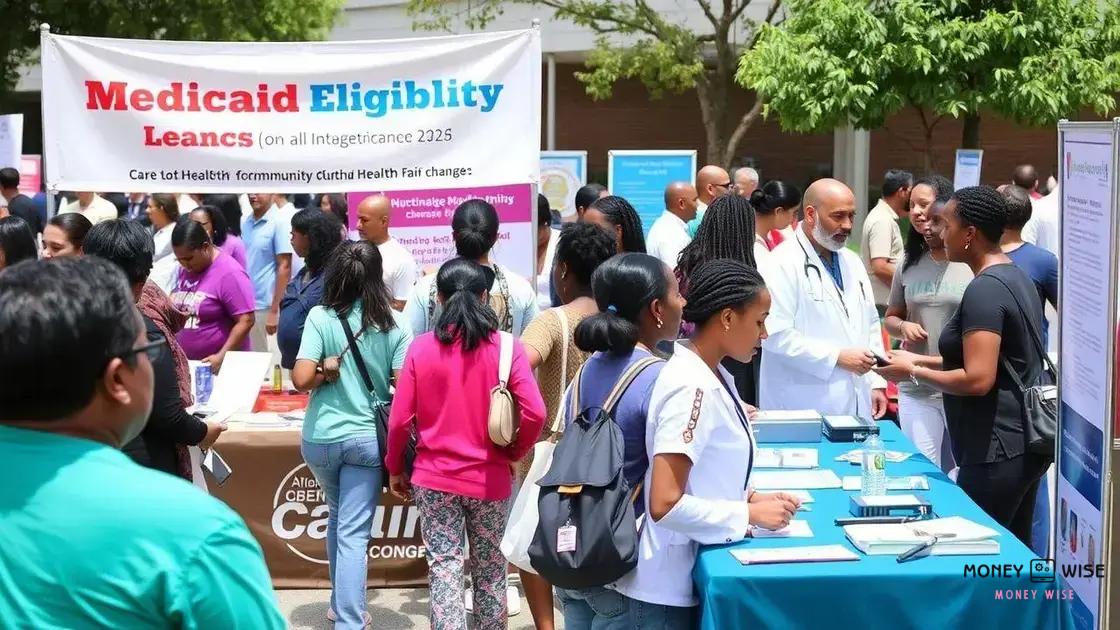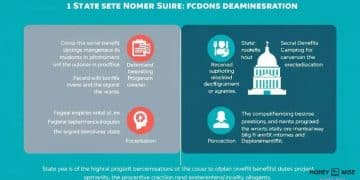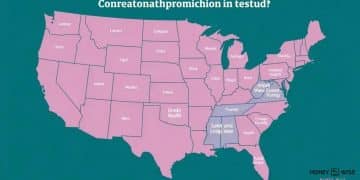Changes in Medicaid eligibility criteria: what you need to know

Changes in Medicaid eligibility criteria have expanded access to healthcare for many low-income individuals and families, allowing those earning up to 138% of the federal poverty level to qualify for assistance.
Changes in Medicaid eligibility criteria are important for many individuals and families seeking health coverage. Have you wondered how these updates might impact your access to necessary care? Let’s dive into this crucial topic.
Understanding the current Medicaid criteria
Understanding the current Medicaid criteria is essential for individuals and families seeking healthcare assistance. Medicaid is a government program that provides health coverage to eligible low-income individuals. Each state has its own specific eligibility requirements, which can sometimes be confusing.
So, what exactly defines the current criteria? Here are a few key aspects:
Income Limits
Most states have established income limits based on the federal poverty level (FPL). This means your eligibility can depend on how much you earn. In many states, individuals must earn below a certain percentage of the FPL to qualify.
Asset Tests
Some states require applicants to undergo an asset test. This means assessing things like savings, property, and other resources to determine if you meet eligibility guidelines. Typically, the limit for countable assets is quite low.
- Individual asset limits usually range from $2,000 to $3,000.
- For couples, the limit can be higher, often set around $3,000 to $6,000.
- Certain assets, like a primary home or retirement accounts, may not count against the limit.
Age and disability also play a significant role in the eligibility process. For example, elderly individuals or those with disabilities often qualify for Medicaid more easily.
Moreover, eligibility can differ for various programs within Medicaid. Some states have expanded Medicaid under the Affordable Care Act, allowing more individuals to access coverage than before.
Staying informed about the current Medicaid criteria can help you navigate these requirements effectively. If you believe you may qualify, consider reaching out to your state’s Medicaid office for assistance and detailed information.
Recent changes to Medicaid eligibility

Recent changes to Medicaid eligibility have made waves in healthcare access across the country. These updates adjust who qualifies for assistance, reflecting new policies and societal needs.
One significant shift has been the expansion of eligibility criteria in many states. This often allows more low-income adults and families access to essential healthcare services.
Key Changes in Eligibility
Among the various changes, there are a few notable points to consider:
- Expansion to cover individuals up to 138% of the federal poverty line.
- Removal of asset tests in some states, making it easier for individuals to qualify.
- Streamlined application processes to ensure quicker access to services.
These adjustments are significant because they help reduce the number of uninsured individuals. With these changes, more people are able to receive necessary medical care, including preventive services.
Many states are also investing in outreach programs to inform eligible residents about these updates. This effort ensures that those who need help can navigate the new system easily.
However, it’s important to recognize that eligibility criteria can vary from state to state. Therefore, checking with your local Medicaid office for specific information is essential. Staying updated with the recent changes to Medicaid eligibility encourages individuals to take charge of their health.
Who is affected by these changes?
Understanding who is affected by these changes in Medicaid eligibility is crucial for many individuals and families. The adjustments impact a variety of groups, from low-income families to elderly individuals.
First and foremost, low-income adults, especially those without children, may find new opportunities for coverage that were previously unavailable. This group often struggles the most with access to health services.
Specific Groups Impacted
Here are some key groups that are directly affected:
- Individuals earning less than 138% of the federal poverty level.
- Children from low-income families who qualify for expanded Medicaid programs.
- People with disabilities who may now receive more comprehensive healthcare services.
Furthermore, elderly individuals on fixed incomes can benefit from these changes. Many states have relaxed certain criteria, making it easier for seniors to gain access to much-needed healthcare.
It’s also important to mention that working families who previously didn’t qualify might find new avenues for assistance. These changes address the needs of those who were caught in the gap, providing crucial support.
Each state implements its own criteria, so the impact of these changes can vary greatly depending on location and local policies. Staying informed about who is affected by these changes can help individuals find the resources they need.
How to navigate new eligibility requirements

Navigating the new eligibility requirements for Medicaid can be overwhelming. With changes in rules, it’s essential to understand how to access the support you need.
The first step is to gather all necessary documents. This can include income statements, proof of residency, and identification. Having these ready can streamline your application process.
Step-by-Step Guidance
Here are some helpful tips for navigating the new requirements:
- Check the specific eligibility criteria in your state by visiting the official Medicaid website.
- Consider reaching out to a local assistance center for personalized help.
- Stay informed about deadlines for applications and renewals to avoid interruptions in coverage.
It’s also wise to use online resources where you can find simplified forms and applications. These tools can help you understand what information is required and how to submit your application efficiently.
If you find the online process challenging, don’t hesitate to seek help from family members or community organizations. Many groups offer free assistance in completing Medicaid applications.
As you go through this process, keep in mind that updates to eligibility requirements may continue to evolve. Therefore, staying updated on any changes can be beneficial to ensure you are always informed.
Resources for learning more about Medicaid
Finding reliable resources to learn more about Medicaid can empower individuals to make informed decisions about their healthcare. With the many changes in eligibility criteria and benefits, understanding where to look is vital.
One of the best places to start is the official Medicaid website. Here, you can access updated information directly from government sources. It provides essential details about eligibility, benefits, and the application process.
Helpful Online Resources
Consider utilizing these online resources as you explore your options:
- The Centers for Medicare & Medicaid Services (CMS) website offers comprehensive information on policies and changes.
- State Medicaid websites can provide localized information tailored to your area.
- Health insurance marketplaces can also be a source for comparing Medicaid with other health coverage options.
In addition to these sites, many nonprofit organizations focus on healthcare advocacy and can provide support. They often have resources to help you understand your rights and guide you through the application process.
Social media platforms, community forums, and local workshops can also be valuable. Connecting with others who are navigating Medicaid can provide insights and personal experiences that may help you.
By exploring these various resources, you can gain a clearer understanding of Medicaid and how it can assist you or your loved ones in accessing healthcare services.
FAQ – Frequently Asked Questions about Medicaid Eligibility Changes
What are the recent changes to Medicaid eligibility?
Recent changes have expanded eligibility for more low-income individuals and families, often allowing those earning up to 138% of the federal poverty level to qualify.
How can I find out if I qualify for Medicaid?
You can check eligibility by visiting your state’s Medicaid website or contacting your local Medicaid office for personalized assistance.
What documents do I need to apply for Medicaid?
Typically, you will need identification, proof of income, and documentation of residency. Having these documents ready can help streamline your application.
Where can I find resources to learn more about Medicaid?
Official government websites, local health departments, and community organizations provide valuable information on Medicaid eligibility and benefits.
Can I get help with the application process?
Yes! There are many organizations and assistance programs that can guide you through the Medicaid application process at no cost.





